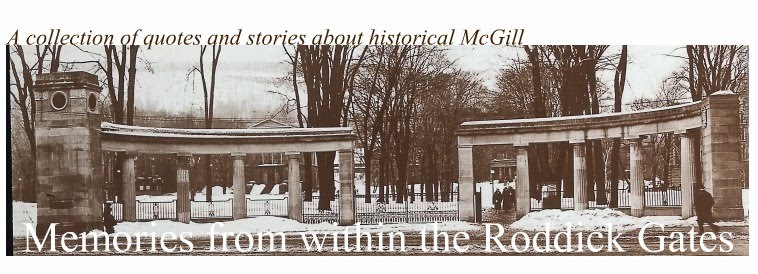Montreal: Seaport and City
by Stephen Leacock
Doubleday, Doran & Company, Inc.
1942, New York
p. 289
“Before the Arts Building, at the front steps, is James McGill's grave, with a strange tree, a ginkgo tree, weeping over it, if such a tree as a ginko can indeed weep. This grave seemed so incongruous, years ago, that they let the bushes grow around the foot of the gingko, and James McGill slept like the beauty in the fairy tale, hidden behind the leaves, his gravestone moldered and illegible. It was forgotten that he was there; the records said that he was buried in 1813 in the Dorchester Street Burying Ground.
Then an energetic dean- from the States, and hence careless of antiquity- had an opening cut in the bushes and the gravestone scraped and the letters rebuilt, and there it was, the original epitaph of eulogy of James McGill's loyalty to his Sovereign and ability, integrity and zeal as a magistrate. To this was added, This Monument and the remains which it covers were removed from the Old Protestant Cemetery, Dorchester Street, and placed here in grateful remembrance of the Founder of this University, 23rd June, 1875.
So now the students on their evenings of merriment sing, -
James McGill,
James McGill,
Peacefully he slumbers there,
Though he knows we're on the tear,
He's our father
Oh yes, rather,
Janes McGill!!!!!
Yet they do say he's not there at all; that he was meant to be there but was never moved. Some day another American dean may come and exhume him. Till then we cannot know. It is probable that this legend of McGill no occupying his own grave arose from the fact- if one may be pardoned for referring to such grim details of the record – that James McGill is not all there and never was. Only the “skull and a few of the greater bones and the bottom of the coffin” were left to remove in 1875. ”




